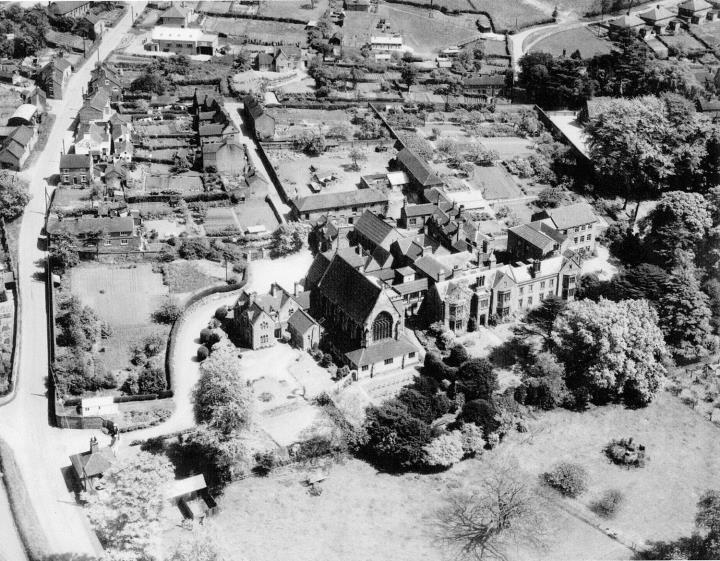Oulton Abbey, Stone - December 2022
Oulton Abbey, formerly Oulton House, was built by Thomas Dent, a solicitor, in about 1720. It was later owned by John Joule, the brewer, who added a new front in 1822. Between 1835 and 1838 it was occupied by the Duke of Sutherland while Trentham Hall was being altered. Between 1838 and 1853 it was a private asylum run by Sarah Bakewell and was known as Oulton Retreat.
Since 1853 it has been occupied by Benedictine nuns and became known as St Mary's Abbey. The nuns have also established a playgroup (since 1968) and Our Lady and St. Benedict's Nursing and Residential Home (since 1989).
The Abbey chapel was built in 1854 to designs by Edward Welby Pugin. A Chapter House, Presbytery and Sacristy were added in 1892.
 History and historic aerial photograph taken from Staffordshire Past Track.
History and historic aerial photograph taken from Staffordshire Past Track.
A new nursing home was constructed in the surrounding grounds in 2017 and as a result the old buildings, with the exception of the chapel, are currently disused. I believe that in the long term there are plans for a residential conversion of the buildings, however there is no indication of such works happening anytime soon.
This has seemingly done the rounds in certain circles already over the last year or so, being local it seemed rude not to go and check it out as it looked relatively interesting. Visited with MotionlessMike and Humpa shortly before Christmas.

The main frontage of what was the original house is rather pleasant. Unfortunately the interiors have been heavily altered to suit their previous usage so they aren't all that exciting.


The rear corridor of the buildings houses this rather cool telephone kiosk. Various parts of the ground floor feature very nice tiled floors - presumably these are from the time when the house became the abbey and was heavily remodelled under the guidance of E.W. Pugin.


Along with the nice tiles, nice windows were plentiful.


Apparently multiple chapels are a must, and along side the massive Pugin chapel there is also this smaller chapel constructed in 1925 and dedicated to St Benedict.


Moving to the first floor, there wasn't a great deal to report. The majority of the spaces were just generic nursing home type bedrooms.



The nice bit was this connecting corridor which links up with the main chapel. In a small room off this was the bell ringing equipment, featuring a manually operated system and also a mechanised system. The less said about the bell tower itself the better, as it was essentially just an asbestos clad box.



To finish off, a couple of shots of the nice stained glass in the aforementioned corridor.

